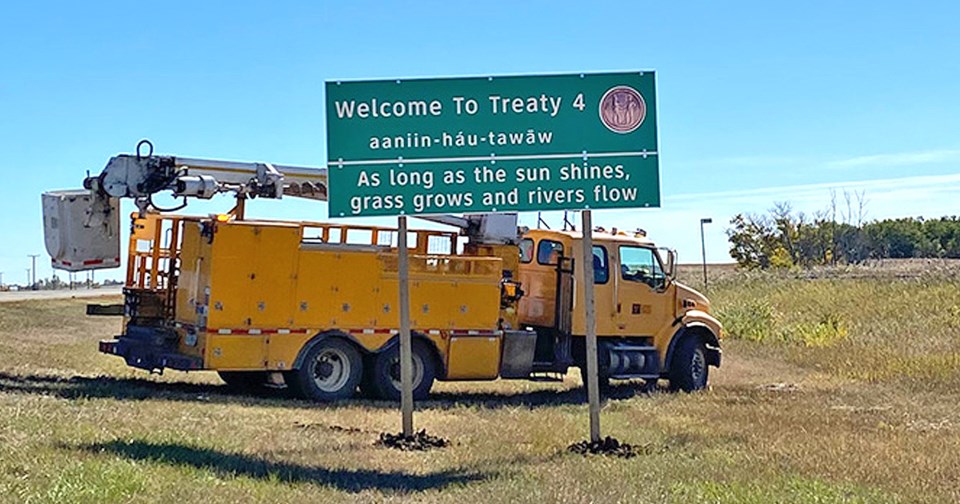NORTHEAST — Land acknowledgements have become a part of many public events and meetings as non-Indigenous people and Indigenous people work towards reconciliation.
They aim to acknowledge the peoples who live on the land the event took place, celebrate the treaties that aimed to provide a framework on how settlers and Indigenous people could live together in perpetuity, and provide a stepping stone for reconciliation.
Annie Battiste, a facilitator with the Office of the Treaty Commissioner, spoke about the important of land acknowledgements at an online educational session hosted by the Lakeland District for Sport, Culture and Recreation on Jan. 25. Participants learned about the history of treaties, the importance of land acknowledgments, and how to prepare and properly write them.
Battiste said that treaties between Indigenous people and non-Indigenous people are one of the building blocks of modern Canada, entered to benefit both parties.
For the settlers, the treaties provided peaceful access to lands taken up for farming and railways, allowed for peaceful settlement of the west, prevented costly wars, and prevented American expansion northward.
For the Indigenous peoples, the perceived benefits of the treaties were the chance to learn new skills from the settlers in the face of a changing world, the maintenance of peace and order between all peoples, the promise of enriched livelihoods, and food security for families and communities.
A land acknowledgement can be simple or complex, Battiste said. In Saskatchewan, it could be as simple as acknowledging the numbered treaty the land sits on, as well as acknowledging the Métis people.
Most of the Northeast is on Treaty 6, with a slice by the Manitoba border belonging to Treaty 5 and the area around the Quill Lakes 小蓝视频 part of Treaty 4.
Battiste said it is also important to acknowledge the traditional lands or the nations who are continuing stewards of the land or territory. Nations in the Northeast include Cree (Nehiyaw or Nehithaw) and Saulteaux (Nahkawe).
Those unsure what land they reside on can go online to to find out more.
Battiste explained that adding the hosting organization’s responsibility to a land acknowledgement is important to understand what you are acknowledging and what it means. Many speakers also add their personal commitment to reconciliation and what it personally means for them to be on this land.
Named after her maternal grandmother, Annie Battiste is a proud Mi’kmaw woman and member of the Potlotek First Nation situated in Unama’ki (Cape Breton, Nova Scotia). She holds a bachelor’s degree and master degree in Educational Foundations from the University of Saskatchewan. She facilitates many educational sessions on Reconciliation, anti-racism, treaty education and indigenous education.
For more information on treaties you can go online to the Office of Treaty Commissioners at .




